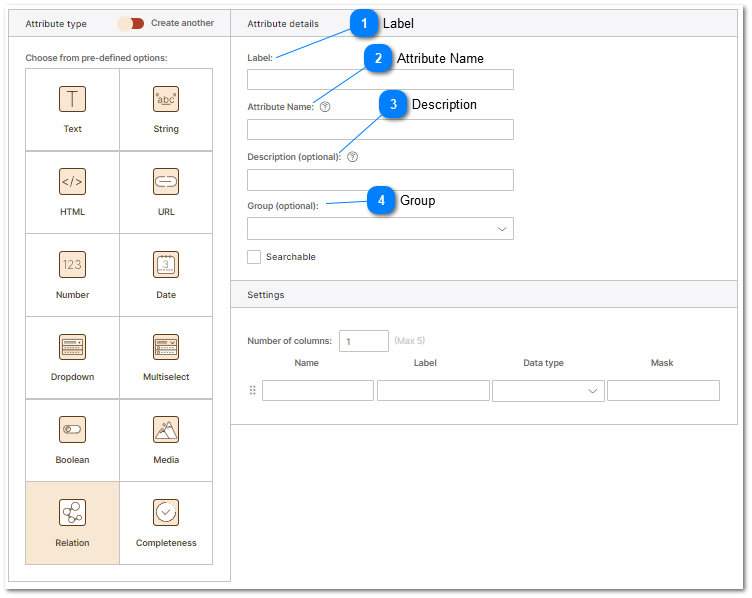PIM Relation Attribute Type
A Product Information Management System (PIM) is used by businesses to manage all the data needed to market and sell products through distribution channels. In a PIM, product relationships help to connect different items together for various reasons, such as enhancing the customer's shopping experience, suggesting related products, or displaying complex information related to a product. A relation attribute is designed to allow complex relationships to be defined between SKU's or products and other data within the PIM. In many cases relation attributes will define relationships between SKU's or with other products. In some cases relationships may contain information related to 'Markets', 'Regulations' and even 'Suppliers' or other data. Here are some examples of product relationships you might want to define:
-
Cross-sell products: This relationship connects products that are typically bought together. For instance, a customer looking at a laptop might see cross-sell suggestions for a mouse, keyboard, or a laptop bag.
-
Up-sell products: Products with an up-sell relationship are higher-end models or versions of the product the customer is currently viewing. For instance, a customer viewing an widget 1.0 they might be presented with the more advanced and pricier Widget 2.0.
-
Substitute products: These are products that can be used as alternatives to the one currently being viewed. For instance, if a customer is looking at a specific brand of coffee maker, they might be shown other coffee makers by different brands as substitutes.
-
Complementary opr Accessory products: These are products that complement or go along with the primary product. For instance, if a customer is buying a camera, they might be shown related items like a tripod, extra batteries, or a camera case.
-
Replacement products: A replacement product is the item suggested to customers when the original product they are interested in has been discontinued. Businesses select replacement products that closely match or surpass the features, specifications, and performance of the discontinued product.
-
Kit Components: Kit components refer to individual parts or items that are included in a kit. A kit is often a set of related products that are sold together, typically because they are used together or complement each other. These components might be standalone products themselves, but when combined, they create a more complete solution or enhance the user experience. For instance, in a photography kit, the components could include a camera body, a lens, a tripod, a memory card, and a carrying case.
Product Relationships may be complex an contain multiple values for each data record in addition to SKU
|
Friendly display name for the attribute displayed in the PIM editing user interface. Additionally labels are consumed by the brand portal and are visible to users who browse product data via the brand portal.
|
|
Group provides multiple functions in the user interface, brand portals, connected channels, feeds and web sites. In the user interface Group allows attributes to be Grouped together for easy editing and display. The screenshot below demonstrates grouping of attributes with the "Group" Dimensions - Packaging" displayed for editing. All attributes that belong to the group are displayed together. Please refer to the Product Attribute Groups help topic for more information. For information on how groups are used by brand portals refer to the Brand Portals help topic.
 |


